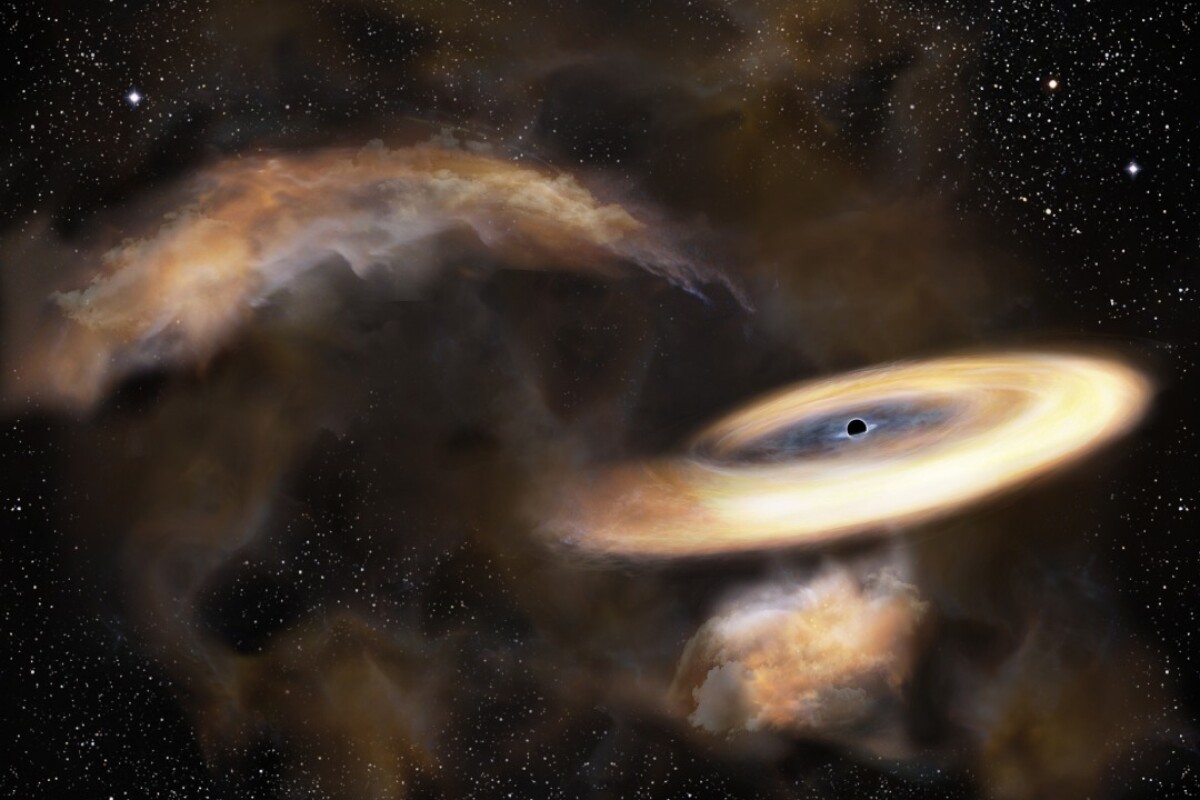Black holes tend to fall into two categories: fairly small or supermassive. It's long been believed that there should be another class of the objects that fall between those two extremes, and in recent years astronomers have found evidence of these "intermediate mass" black holes (IMBHs). Now a Japanese team has located one near the center of the Milky Way.
When some stars go supernova, they leave behind a black hole with a mass a few times bigger than the Sun. Way up the other end of the scale, you've got supermassive black holes that sit at the center of galaxies, with masses ranging from hundreds of thousands to billions of Suns.
It seems weird that black holes would polarize themselves so strongly, leading scientists to predict that there must be some lurking in that huge middle ground. But black holes are infamously invisible, so they have to be observed indirectly.
In recent years, potential IMBHs have been spotted in radio wave observations of distant galaxies, the gravitational stirrings of stars in a cluster called 47 Tucanae, or flares created as the black hole tears a star to shreds.
For the new study, researchers from the National Astronomical Observatory of Japan were investigating a cloud of gas, located near the center of the Milky Way galaxy, that seemed to be moving strangely. Looking at it with the Atacama Large Millimeter Array (ALMA), the team found that the gas was churning around something big and invisible – the calling card of a black hole.
"Detailed kinematic analyses revealed that an enormous mass, 30,000 times that of the Sun, was concentrated in a region much smaller than our solar system," says Shunya Takekawa, lead researcher on the study. "This and the lack of any observed object at that location strongly suggests an intermediate-mass black hole. By analyzing other anomalous clouds, we hope to expose other quiet black holes."
These middleweights are thought to play a key role in the formation of larger black holes, as smaller objects gradually merge and eventually become the supermassive monsters with enough gravitational power to hold a galaxy together. And given how close this new object is to the center of the Milky Way, it may be fated to becoming a cosmic snack as part of this process.
"It is significant that this intermediate mass black hole was found only 20 light-years from the supermassive black hole at the galactic center," says Tomoharu Oka, co-lead author of the study. "In the future, it will fall into the supermassive black hole, much like gas is currently falling into it. This supports the merger model of black hole growth."
The research was published in Astrophysical Journal Letters.




